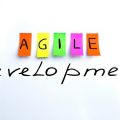What is the MEAN Stack and Why is it Better than LAMP

Each of these items provides vital features and time-saving tools for website development. Although another popular set of technologies known as the LAMP stack may be some developers’ preferred stack, this article will outline precisely why you will find more success with MEAN stack development in the web development industry.
MongoDB
The first letter in MEAN stands for MongoDB. You will use this for your website’s databases. You may store anything in the database from basic user credentials to shared information like the comments on a forum. MongoDB uses the file format JSON, which will be familiar and intuitive to you if you have ever used a JavasScript object. With helpful learning resources and solid documentation, MongoDB is an excellent choice for today’s web developers both new and old. In contrast, the database system in the LAMP stack is considered outdated by some and also much stricter, making MongoDB the ideal choice.
Express.js
Express.js plays a vital role in the MEAN stack, as it works hand-in-hand with Node.js to communicate with the server, establish routes that determine what happens at each URL, and ultimately create a networked application using JavaScript. It is an easy-to-use back-end framework that allows you as a MEAN full stack developer to follow best practices in RESTful routing or simply create a web application quickly. Using Express.js will provide you with a useful skill beyond only the MEAN stack, as Express.js can work with databases other than MongoDB, as well as a wide variety of template engines including EJS and Jade.
AngularJS
As a MEAN full stack developer, you will be exposed to many front-end frameworks. However, AngularJS stands out because it has simple architecture, it supports unit testing, and it provides a fast development environment. Additionally, AngularJS boasts a large community of fellow developers to help you with problems and share your work when it comes to MEAN stack development and the front-end UI.
Node.js
As mentioned earlier, Node.js is what allows the web developer to use JavaScript on the back-end of the website. It is an event-driven runtime environment that also has countless quality, independent packages available for download using something known as npm. In fact, Express.js is one of the most popular packages in Node.js’ package manager, npm. Other popular packages include Passport for user authentication, as well as body-parser for managing form input.
Instead of learning an entirely new language and becoming confused with basic syntax rules, using Node.js allows you to become an expert in a single programming language. If you are new to the back-end, you will have an easier time picking up the basics. Eventually, you can boast a high level of knowledge about the subtle details of JavaScript, because your entire software stack relies on it.
Additional Benefits of the MEAN Stack
The MEAN Stack Is Intuitive
The MEAN stacks provides everything necessary to create a competitive web application, yet it is less complicated compared to the LAMP stack. Although it is possible to rely on strict schemas and format data very specifically, as required in the LAMP stack’s MySQL, it is not necessary in the MEAN stack. In fact, MongoDB allows the developer to easily add new information to some, but not all, of the items in a JSON file. This is in contrast to MySQL, where a developer simply must provide information to every item, even if the value is “undefined”, or absent.
The LAMP Stack Is Outdated
Another common criticism of the LAMP stack is that it can be considered outdated by some. PHP has fallen under heavy criticism for its overly complex practices and lack of industry experts. In contrast, the MEAN stack has become one of the industry standard stacks for small startups, rapid development, and successful, profitable corporations. As a developer, you will likely face all kinds of clients, including some who rely on older technology. Although PHP may be used in some cases, working with the MEAN stack is ultimately a better choice for any developer.
Other articles and publications:
Articles and publications of other companies:
- +1 (972) 454-4888
- 450 Century Parkway, Suite 250, Allen, TX 75287, USA
- jumpgrowth.com













